Take a look at the 15th-century painting “Portrait of a Woman From the Hofer Family,” and you’ll immediately spot an oddity. The work of an unknown artist, the German masterpiece contains a curious detail—a single fly on the subject’s realistically rendered full white veil.
“Why does this lady have a fly on her head?” asks Francesca Whitlum-Cooper, the associate curator of London’s National Gallery, in a video. “What does that tell us about the tricks that artists play on us?”
Explaining the work’s origins, Ms. Whitlum-Cooper goes on to describe how having your portrait painted at that time in history would have been “unimaginably expensive,” even for the very wealthy. It might only take place once or twice in such a person’s life and would entail dressing in your finest clothes in an effort to look as presentable as possible.
Sitting for the portrait would then take hours; afterward, there would be a long wait to see the finished result while the artist worked their magic. Imagine, then, seeing a fly deliberately inserted into your prized image.
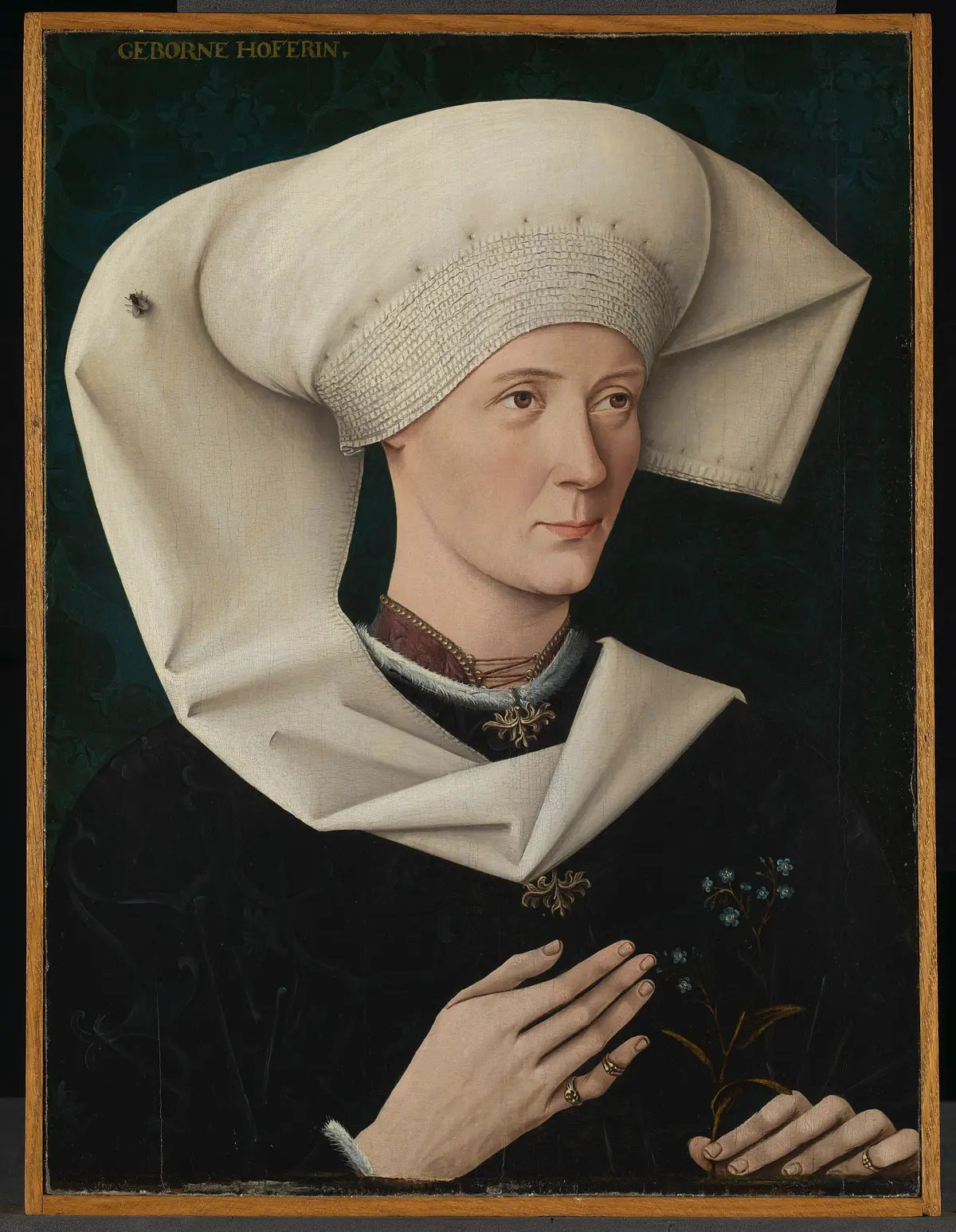 The 15th-century painting "Portrait of a Woman from the Hofer Family" at London's National Gallery. (NG722 Portrait of a Woman of the Hofer Family by Swabian about 1470 © The National Gallery, London)
The 15th-century painting "Portrait of a Woman from the Hofer Family" at London's National Gallery. (NG722 Portrait of a Woman of the Hofer Family by Swabian about 1470 © The National Gallery, London)The painting, estimated to have been done in around 1470 by an artist working in southwestern Germany, represents the ultimate goal of artists throughout the centuries of capturing a lifelike moment in time.
Everything about the portrait, the curator says, is designed to speak of affluence. From the brocade fabric of the lady’s costume with its intricate metal clasps, to the woven fabric background. The young woman—her smooth, unlined face captured with great attention to detail—also wears valuable gold rings. Her spotless white headdress would have required much laundering and ironing; another marker of wealth.
“Of course, the headdress brings us back to ... this pesky fly sitting there with its horrible googly eyes—and its transparent wings painted in such detail that you’ve not only got the spindly fly legs, but even the shadow cast by those legs on the white headdress,” Ms. Whitlum-Cooper said, “so why has the artist included a fly on this lovely-looking lady’s head?”
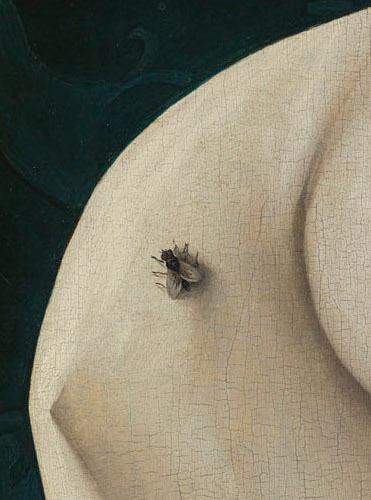 (NG722 Portrait of a Woman of the Hofer Family by Swabian about 1470 © The National Gallery, London)
(NG722 Portrait of a Woman of the Hofer Family by Swabian about 1470 © The National Gallery, London)The answer, she believes, is that it’s a joke. What’s so clever about it, says Ms. Whitlum-Cooper, is that it’s a double joke: on the one hand, the fly has been tricked into thinking the headdress is real. In addition, the viewer’s first instinct is to notice the fly and want to bat it away.
“We’ve been duped,” Ms. Whitlum-Cooper said. “Because actually, everything here is two-dimensional—this is just paint. The skill of the artist is that they’ve been able to take that paint, and a brush and a bit of wood, and to conjure it into something that feels so lifelike. We do believe, even just for a second, that that’s a fly sitting on that picture.”
Ms. Whitlum-Cooper points out that the lady inhabited a totally different universe to today and was living hundreds of years before the kind of image-saturated world that we live in, where everyone has cameras in their pockets.
“The artists were saying, ‘Look at me, look how I can capture the world around me.’”
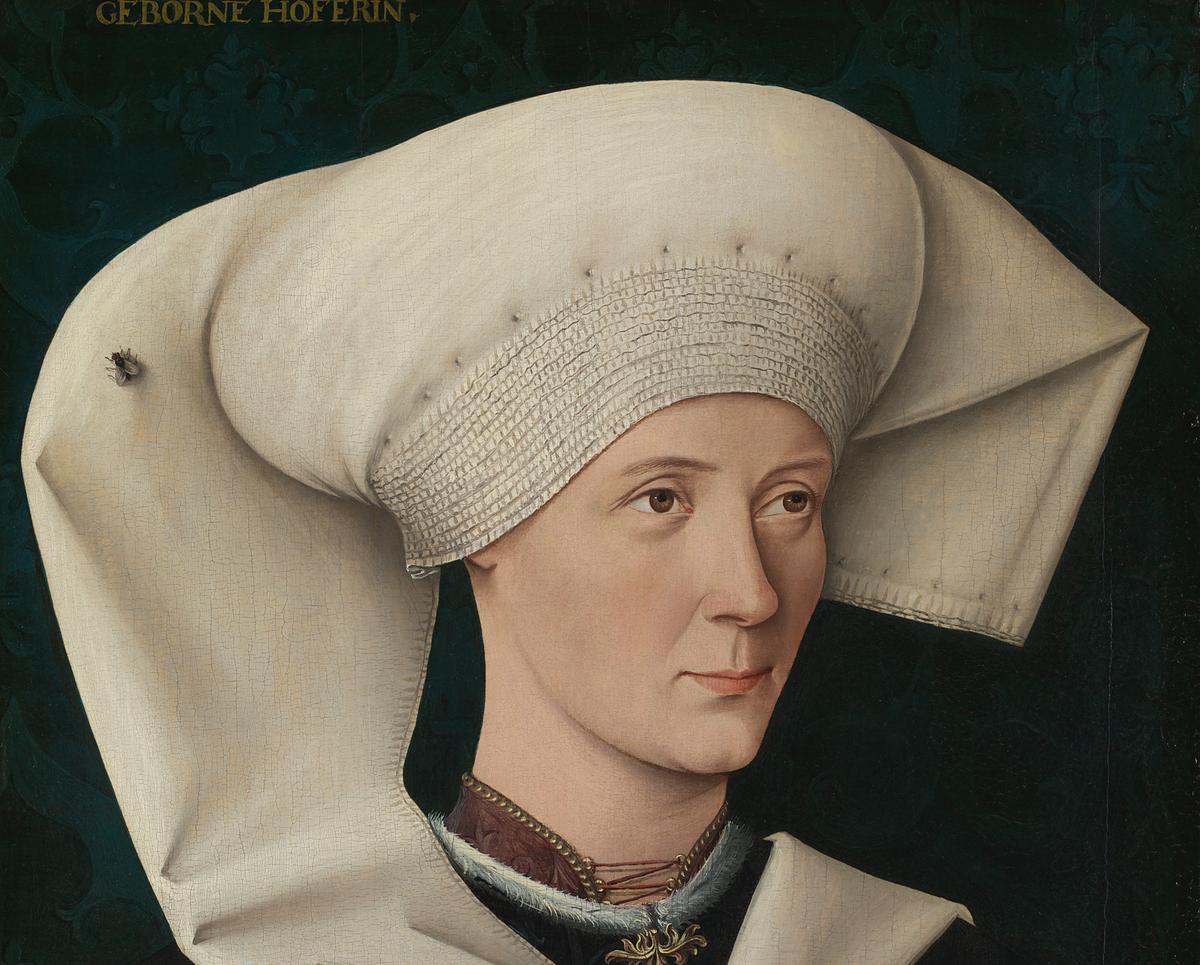 The unknown German artist has perfectly painted in the tiny-yet-detailed fly sitting on the realistic white headdress. (NG722 Portrait of a Woman of the Hofer Family by Swabian about 1470 © The National Gallery, London)
The unknown German artist has perfectly painted in the tiny-yet-detailed fly sitting on the realistic white headdress. (NG722 Portrait of a Woman of the Hofer Family by Swabian about 1470 © The National Gallery, London)The impulse to trick the viewer, to make something fictional so believable, goes right back to the origins of painting.
“Painting in the Western tradition is thought to begin in about the fifth century B.C., in ancient Greece,” said Ms. Whitlum-Cooper, going on to talk about the concept of “radical illusionism” whereby artists paint images so lifelike, even nature is fooled into believing they’re real.
The curator thinks that in the case of “Portrait of a Woman From the Hofer Family,” the subject must have been in on the joke: “There’s no way an artist just sticks a fly in there without her knowing about it. When I look at her slightly upturning lips, and I look at the fly, I think she must have appreciated what that meant in terms of tricking people; that friends and family coming to view it would have that moment of being duped by the illusion.”
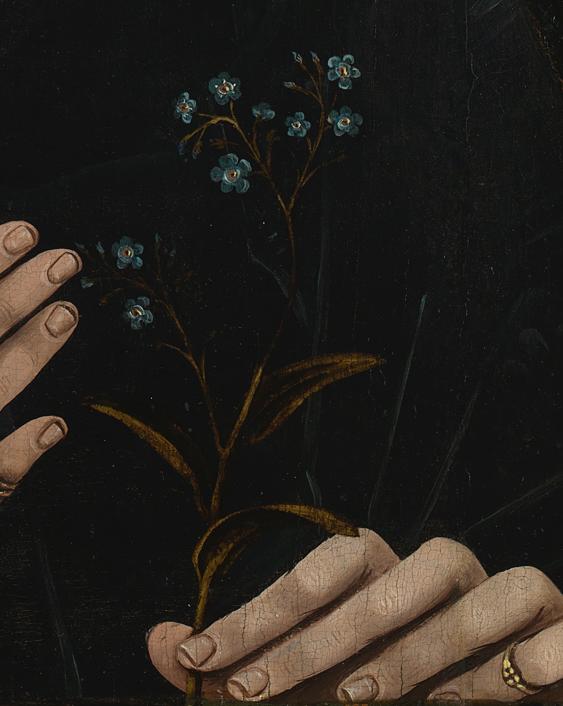 A close-up of the forget-me-not flowers in the subject's hands. (NG722 Portrait of a Woman of the Hofer Family by Swabian about 1470 © The National Gallery, London)
A close-up of the forget-me-not flowers in the subject's hands. (NG722 Portrait of a Woman of the Hofer Family by Swabian about 1470 © The National Gallery, London)The identity of the woman in the portrait is a bit of a mystery, but the fact that she’s holding a little sprig of delicate forget-me-not flowers makes Ms. Whitlum-Cooper think since they’re associated with love, the picture may have been commissioned to commemorate an engagement or marriage. There’s also a possibility that the flower variety holds a further clue.
Ms. Whitlum-Cooper said: “Think about the name. Even in English, forget-me-not; that’s a flower associated with remembrance and not forgetting people. Is this a portrait that’s being painted so we remember this woman after she’s gone? We don’t 100 percent [know].”
The curious portrait has an intriguing history. This picture was owned by Prince Albert, the Prince Consort, husband of Queen Victoria, and he gave it to her as a gift—and, at his encouragement, she gifted it to the nation, says Ms. Whitlum-Cooper.
“Whatever this lady’s story might be, we know that it comes to us through a bit of a love story,“ she said. ”It should go without saying that this is by no means the largest picture in our collection at the National Gallery. I think you'd have a hard time arguing it’s the most important, but it is a picture that really rewards close looking.”
“Portrait of a Woman From the Hofer Family” not only makes the curator smile every time she goes to see it, but she says, it reminds her that “the very best artists always keep us on our toes.”

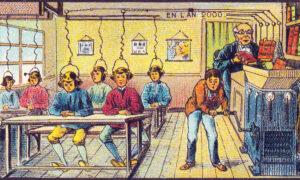





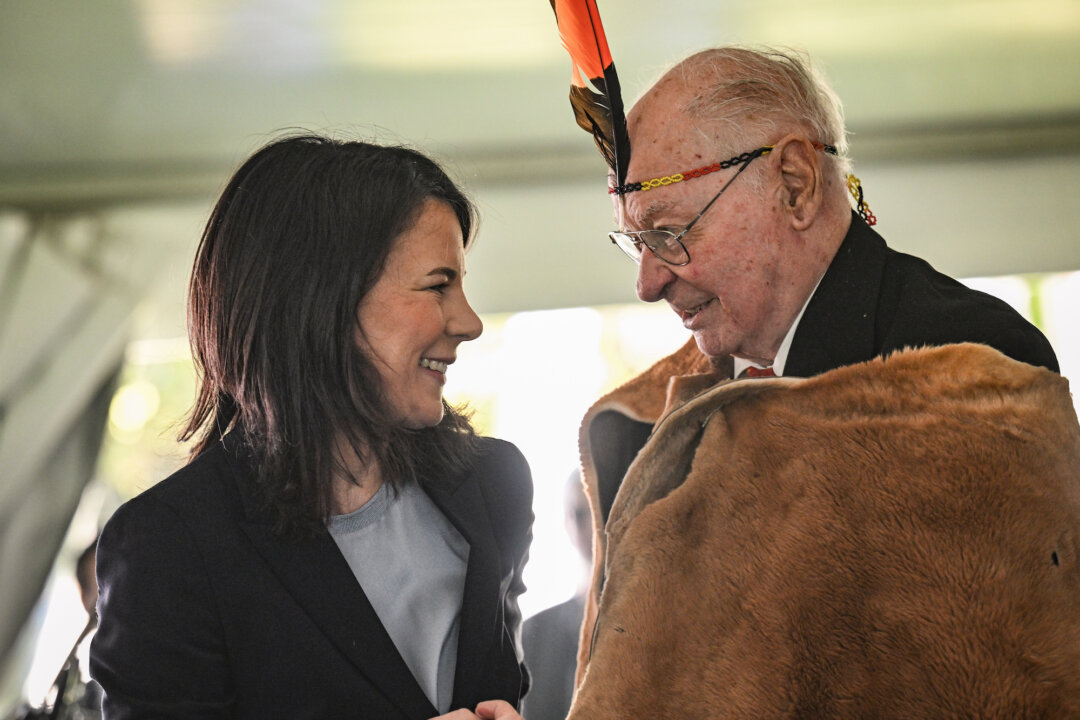






 English (US) ·
English (US) ·  Turkish (TR) ·
Turkish (TR) ·